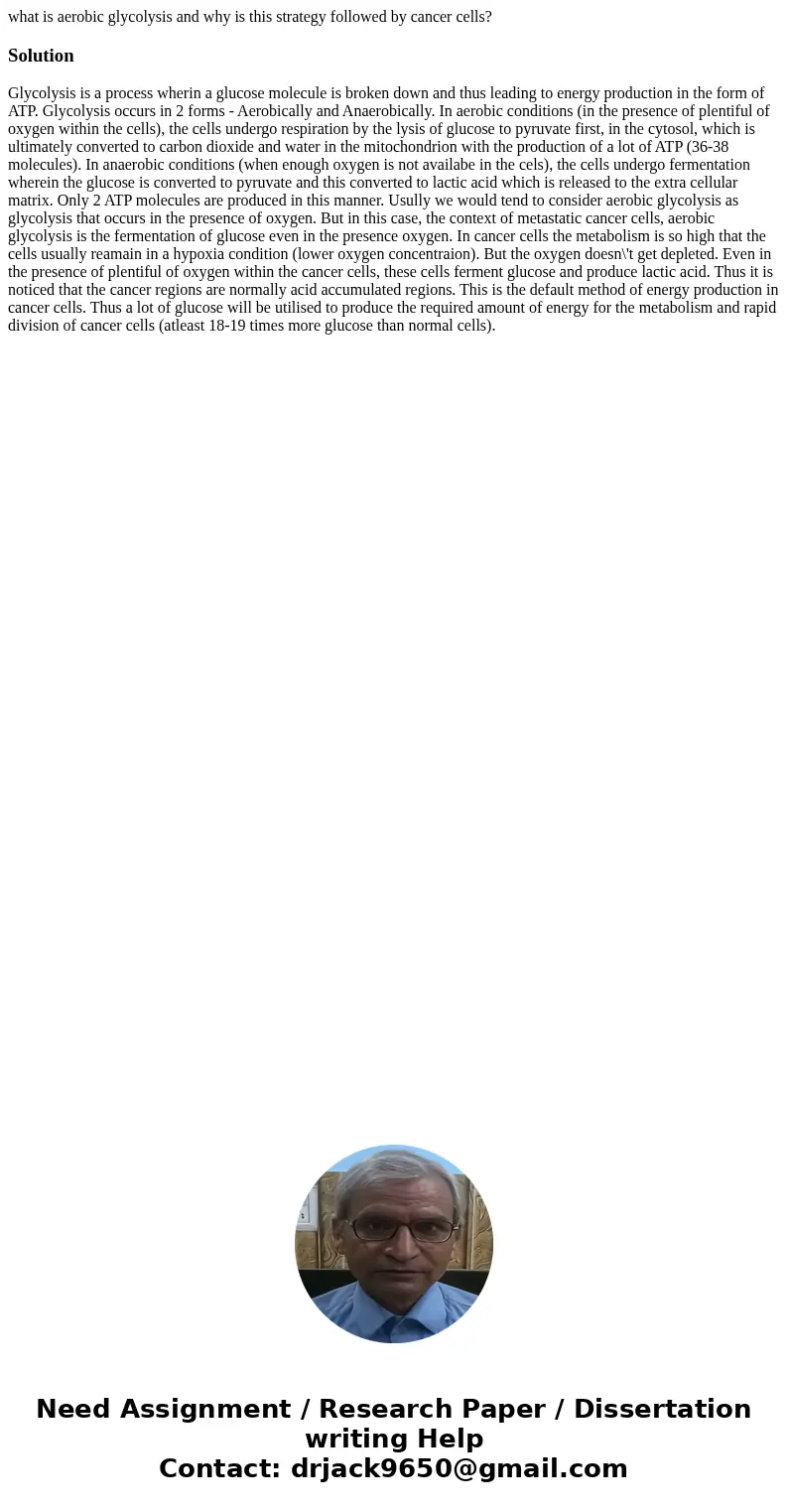what is aerobic glycolysis and why is this strategy followed
what is aerobic glycolysis and why is this strategy followed by cancer cells?
Solution
Glycolysis is a process wherin a glucose molecule is broken down and thus leading to energy production in the form of ATP. Glycolysis occurs in 2 forms - Aerobically and Anaerobically. In aerobic conditions (in the presence of plentiful of oxygen within the cells), the cells undergo respiration by the lysis of glucose to pyruvate first, in the cytosol, which is ultimately converted to carbon dioxide and water in the mitochondrion with the production of a lot of ATP (36-38 molecules). In anaerobic conditions (when enough oxygen is not availabe in the cels), the cells undergo fermentation wherein the glucose is converted to pyruvate and this converted to lactic acid which is released to the extra cellular matrix. Only 2 ATP molecules are produced in this manner. Usully we would tend to consider aerobic glycolysis as glycolysis that occurs in the presence of oxygen. But in this case, the context of metastatic cancer cells, aerobic glycolysis is the fermentation of glucose even in the presence oxygen. In cancer cells the metabolism is so high that the cells usually reamain in a hypoxia condition (lower oxygen concentraion). But the oxygen doesn\'t get depleted. Even in the presence of plentiful of oxygen within the cancer cells, these cells ferment glucose and produce lactic acid. Thus it is noticed that the cancer regions are normally acid accumulated regions. This is the default method of energy production in cancer cells. Thus a lot of glucose will be utilised to produce the required amount of energy for the metabolism and rapid division of cancer cells (atleast 18-19 times more glucose than normal cells).
 Homework Sourse
Homework Sourse